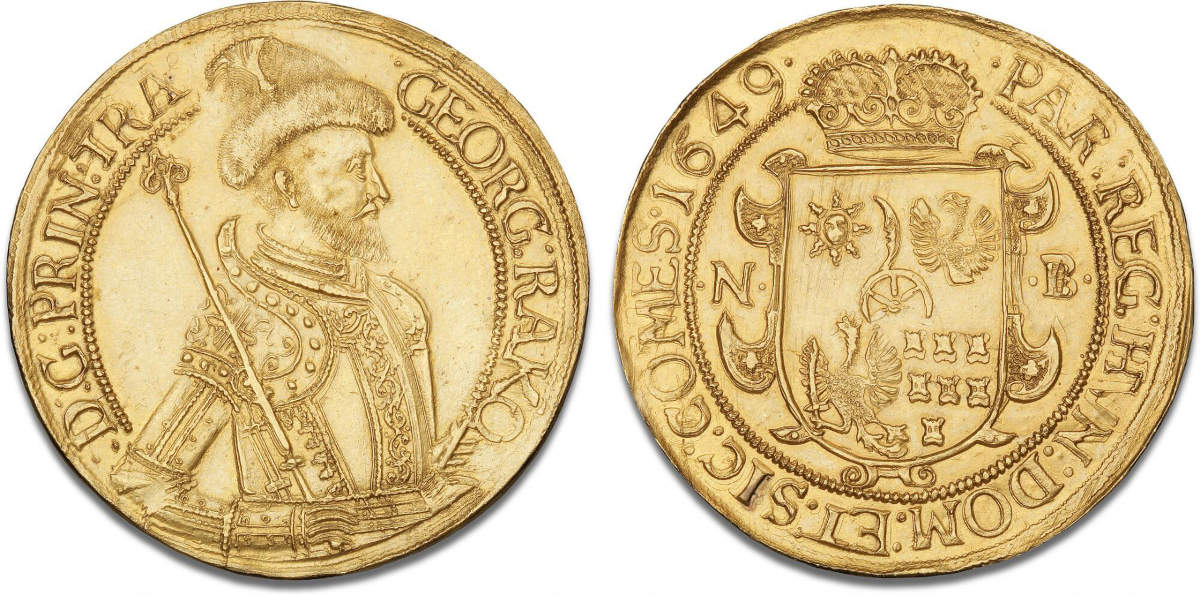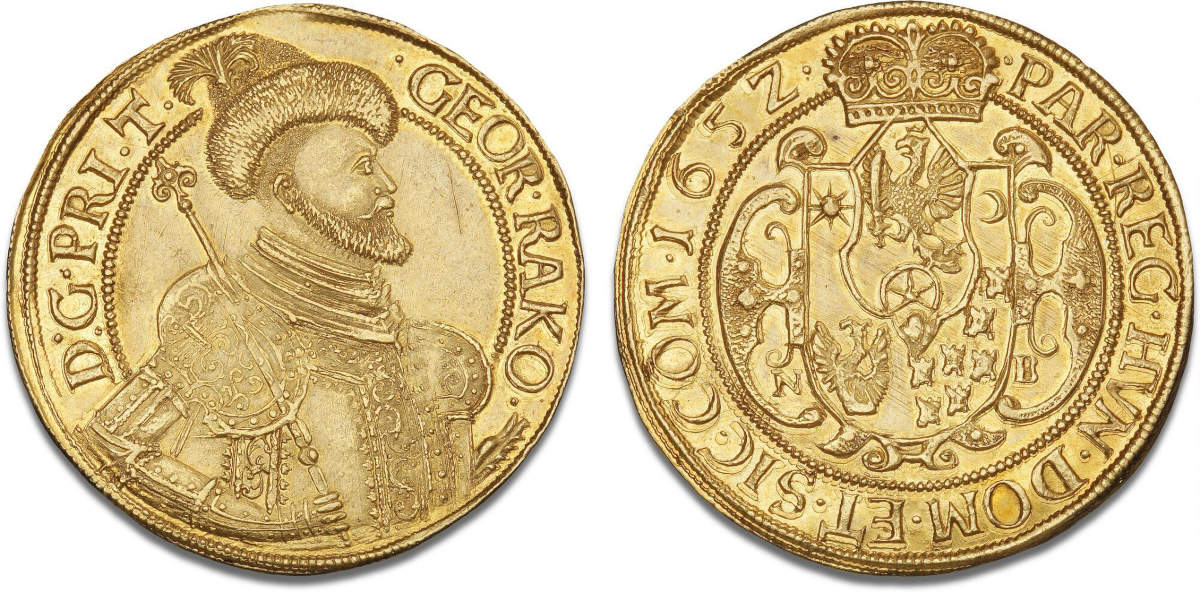Collection of Rare Coins of the Rákóczi
On 8 November 2022, an extremely rare collection with a fascinating history will be auctioned off at Bruun Rasmussen. These are coins minted for the Rákóczi dynasty, which was a dominant noble family in the Kingdom of Hungary between the 13th and 18th centuries.
According to Michael Fornitz, Chief Numismatist at Bruun Rasmussen Auctioneers, the suite of Transylvanian coins from this collection is so special that the majority of his international colleagues would probably be rendered speechless if they saw it. Besides being both beautiful and fascinating, the unusual coins also impress when it comes to size.
“The collection itself is remarkable, both in terms of quality and history. In addition, it is the first time that gold coins of this size and weight from the 17th century have been offered at an auction in Denmark. We are talking about very impressive gold coins,” says Michael Fornitz.
In the Ownership of the Ragoczy Family
The earliest history of the offered coin collection has unfortunately been lost, but it is at least known that it has belonged to Johannes Walther Franz Lothar Valerius Ragoczy, who was of Hungarian descent, but immigrated from Silesia to Denmark in 1898. Together with Louis H. Poulsen, he created a profitable business as a leather goods wholesaler and established one of the leading leather goods companies in the Nordic countries.
“Valerius Ragoczy had a big heart when it came to art, history and literature, and was a collector with a capital C,” says Michael Fornitz.
Valerius Ragoczy owned several paintings by well-known artists such as Jens Juel, and his book collection with rare works by Tycho Brahe is legendary. His most remarkable collection, however, was his collection of Danish and Norwegian coins, which were sold at two major auctions in 1959 and 1961. Several of the coins have until now remained in the family’s possession, unbeknownst to both collectors and researchers, but now they can be found at Bruun Rasmussen’s coin auction, where everyone can bid on them.
The House of Rákóczi
Transylvania is probably especially known for the infamous and fictitious Count Dracula as well as other bloodthirsty vampires, but in reality, the region also contains the fascinating and complex history of the House of Rákóczi, which has played a pivotal role in the creation of a national identity.
The family’s many historic members include names such as Sigismund Rákóczi (1544–1608), who had an illustrious career in the wars against the Ottomans. He was appointed Prince of Transylvania by the Siebenburg Diet in 1607, and at his death he had amassed such great fortunes that his descendants became the richest in Hungary. Sigismund’s son, Georg I Rákóczi (*1593–1648), who was a devout Protestant and thus in open opposition to the Habsburg monarchy, was Prince of Transylvania from 1630 to 1648.
Georg II Rákóczi (*1621–1660), who in 1657 led an army of 40,000 men against the Polish King John II Casimir and with Swedish help captured both Kraków and Warsaw, but the army was soon pushed back. In his final years, Georg II was in constant confrontations with the Grand Vizier of the Ottoman Empire and died in 1660 while fighting the Turks at the Battle of Szászfenes.
Franz (Ferenc) II Rákóczi (1676–1735) is still today considered nothing less than a Hungarian national hero because of his efforts in the war he waged between 1702 and 1711 to obtain Hungarian independence from the Habsburgs.
The estimates on the coins from the Ragoczy Collection range from DKK 3,000 and up to DKK 600,000. They will all be for sale at Bruun Rasmussen’s coin auction in Copenhagen on 8 November at 4 pm CEST. Here you can view the Ragoczy Collection.
For further information, visit the Bruun Rasmussen website.








